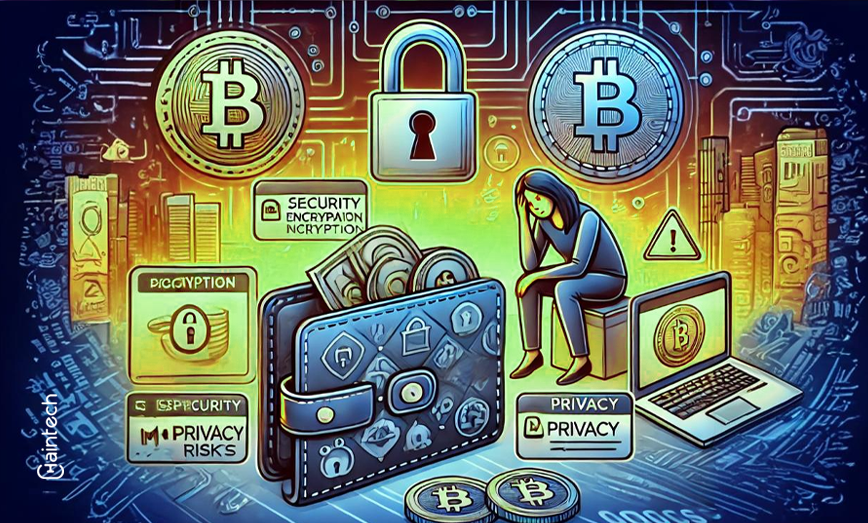The Security and Privacy Concerns Surrounding CBDCs

The concept of implementing a central bank digital currency, or CBDC, appears to be quite appealing. Picture this: you can use your country’s central bank and make payments instantly without any third parties involved. No more handling cash, no more bank cards, just a simple digital transaction. But here’s where concerns start. If CBDCs take off, every transaction you make could be tracked. Every dollar you spend could be visible to the government.
Many people expressed worry about CBDCs because of privacy concerns. They worry about who would access their spending records and how secure the digital currency would really be. As countries start to migrate towards using CBDCs, security and privacy concerns become increasingly pertinent.
CBDCs: How to ensure security, privacy, and the threat of over surveillance
- CBDCs could allow more monitoring of individual transactions.
- The digital currency has also opened up avenues for various hacking opportunities.
- CBDCs will face difficulty in ensuring proper privacy while providing security.
Let us now turn our attention to the specific issues of security and privacy that have appeared in the discussions about CBDCs.
What are CBDCs?
CBDCs, or central bank digital currencies, are an electronic form of domestic banks’ money issued by the Central banks. They are different than cryptocurrencies such as bitcoin because those forms of currency aren’t centralized. A government or its central (main) bank controls fully issued CBDC.
This digital currency could become an alternative to cash, but without the anonymity cash provides. In theory, every transaction made with a CBDC may be tracked, enabling the authorities to access citizens’ expenditure habits.
Why are governments interested in CBDCs?
With CBDCs, governments are aiming to implement futuristic approaches towards the economy. Possibly the simplest way of shifting one to another center of an economy, which can, in turn, join the unbanked and reduce the cost of transactions. Besides, this will allow the central banks to control their monetary system, which is needed for any economy.
Unlike cash, however, CBDCs do not provide any privacy features. Because of this degree of control and transparency of accounts and transactions, many people regard privacy as an issue.
Privacy risks with CBDCs: How they threaten financial privacy
CBDCs raise big privacy concerns. Cash is private. You can buy things without leaving a record of your name or details. CBDCs are different. With every digital transaction, a record could be made. This gives governments the ability to track spending down to the last cent.
Imagine every purchase, from groceries to coffee, being part of a permanent digital record. It’s not hard to see how this might worry people. In some cases, it could lead to unnecessary surveillance. If central banks track every transaction, it could even reveal personal choices and habits.
Table: How Privacy Differs with Cash, Cryptocurrency, and CBDCs
| Feature | Cash | Cryptocurrency | CBDCs |
| Anonymity | High | Medium | Low |
| Traceability | None | Limited | Full |
| Control | No central authority | Decentralized | Central bank controlled |
| Data Collection | None | Limited | Extensive potential |
| Privacy Level | High | Medium | Low |
Security concerns with CBDCs: Are they safe?
The security of CBDCs is a big issue. If CBDCs become common, they’ll likely be a huge target for hackers. In the digital world, anything that holds value can attract cyberattacks. Hackers could try to break into the system, risking people’s money and their personal financial data.
Securing a CBDC isn’t simple. Traditional financial systems use strong encryption, separate networks, and regular security checks to protect data. But CBDCs will need even tougher protections because they will likely be even more valuable. Here are some of the common security risks CBDCs could face.
Common security risks with CBDCs:
- Cyberattacks: Hackers may try to steal CBDCs or access user data.
- Data Breaches: If CBDC systems are hacked, personal financial details could be exposed.
- Phishing scams: Scammers may trick users into sharing their CBDC access information.
- Identity Theft: An attack on real users may be initiated when an attack is able to breach through data.
- System Vulnerabilities: Hacks may be used to take advantage of any slacks within the CBDC code algorithms.
Given the amount of resources involved, it’s apparent that government and central authorities will need, and be completely willing, to spend a lot on cyber security systems in order to keep the CBDCs out of harm’s way.
Did you know?
CBDCs could allow governments to monitor individual transactions in real-time, potentially giving authorities insights into how you spend every dollar.
To what extent does privacy need to be sanctified? Where to draw the line
Transitivity and CBDC use cases are two elements that ECAs must take into account, as each comes with its own set of implications. These authorities need to address the issue of being too transparent or not transparent enough. Money laundering, tax evasion, and such illegal activity are dealt with by authorities using the money tracking technique. However, people are more likely to have things like unwarranted spying on them if there is too much transparency.
For example, governments may want to monitor CBDCs to prevent illegal activities. However, tracking every transaction could interfere with individual privacy rights. Some countries like China are developing their CBDCs with different levels of privacy in them. The countries’ digital yuan intends for people to have some level of privacy while at the same time allowing for easy transactions when anyone in the government is looking for them.
With regards to enhancement of privacy, governments may look to DEEP technologies. In this instance, zero-knowledge proofs enable validation of information without any details about that information being shared. A different one may also be selective transparency, where only some transactions exceeding a certain value will be tracked. This setup could help maintain some level of privacy while still supporting law enforcement.
Solutions for CBDC security and privacy issues
Several new technologies could help protect CBDC’s privacy and security. These solutions aim to make CBDCs safe for users while preserving privacy as much as possible. Here are a few options being examined, including:
- Zero-Knowledge Proofs: allows for confirming the authenticity of data without making the private information public.
- Tokenization: Central bank digital currencies can be tokenized for easier tracking control and regulation.
- Secure Multi-Party Computation: This allows safe data sharing between systems without exposing data.
- Encryption: This is used in order to ensure the confidentiality as well as integrity of the transactional data.
- Blockchain, or Distributed Ledger Technology: offers a distributed solution for storage, enabling better protection against data theft.
All these technologies would seem to add additional security features to CBDCs. However, implementing these systems across entire nations will be arduous and costly enterprises. It will also necessitate the paradigm of technical know-how & policies to use them in a manner that does not violate the privacy of the users.
The way ahead for CBDCs: Security measures vis-à-vis privacy issues
The success of CBDCs lies in the future development of security features and the level of privacy one possesses. There aren’t any safeguards; people would probably be apprehensive about these digital currencies. For CBDC’s to be successful, there has to be a feeling of security for users and respect for their privacy.
A balanced order has to be achieved by central banks as well as governments. Using advanced technology and creating strict policies can help protect users while enabling a more efficient digital currency. But finding this balance won’t be easy. It will take careful planning, strong cooperation, and ongoing research.
Did you know?
CBDCs are more vulnerable to cyberattacks than cash or physical assets, meaning governments need advanced cybersecurity to keep these digital currencies safe.
FAQs
1. What are CBDCs?
A central bank digital currency (CBDC) is a digital currency issued by a country’s central bank that holds the same value as the physical currency of that country.
2. Do CBDCs have provisions for user anonymity?
The design of CBDCs can incorporate some form of user privacy, but generally, the level of privacy of these currencies is much lower than that of liquid forms of currency.
3. Is there a threat to CBDCs from Internet-based attacks?
Like any other computer-based system, CBDCs may be the target of hacking attempts, thus requiring robust security features.
4. How do CBDCs work, and how are they different from cryptocurrency?
While cryptocurrency is decentralized, CBDCs are always controlled and issued by a central authority, often a governmental institution or a central bank.
5. To what end do countries issue CBDCs?
For the economies, authorities view CBDCs as an opportunity to advance the economy overall, reduce the time and complexity of transactions for users, and improve control over the financial system.









